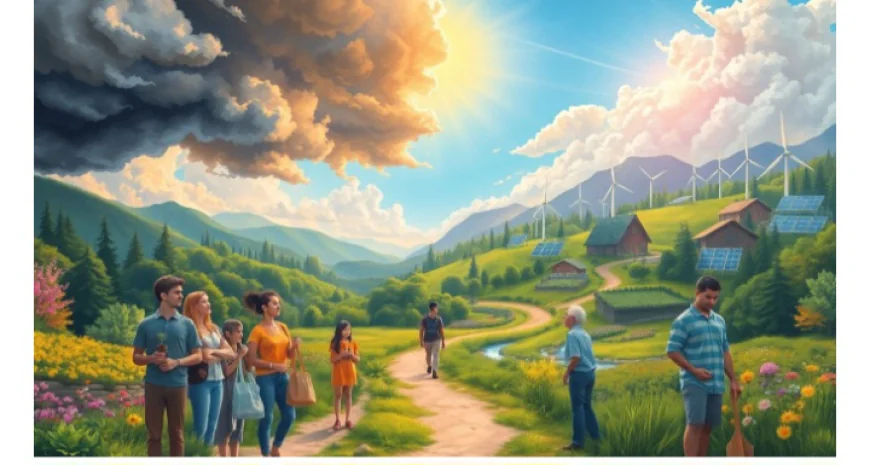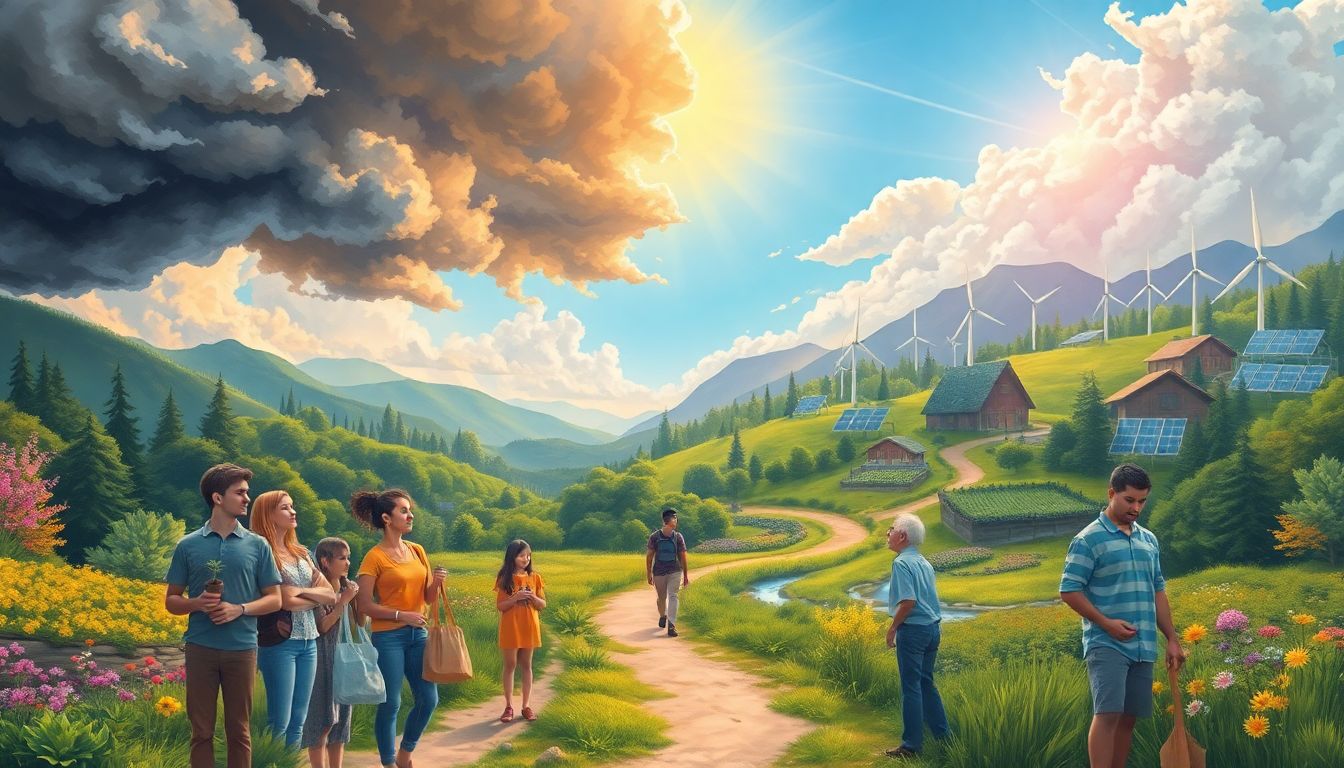From Eco-Anxiety to Action: A Visual Roadmap for Climate Hope
Many people today feel overwhelmed by climate worries. Surveys show rising eco-anxiety among teens, adults, and even seniors. This emotional storm can make us feel helpless or stuck. But the good news? We can turn those feelings into positive steps. Visual tools are powerful—they can simplify problems, spark hope, and guide us forward. This article offers a clear roadmap—understanding eco-anxiety, embracing hope, visualizing solutions, and taking real action.


From Eco-Anxiety to Action: A Visual Roadmap for Climate Hope
Introduction
Many people today feel overwhelmed by climate worries. Surveys show rising eco-anxiety among teens, adults, and even seniors. This emotional storm can make us feel helpless or stuck. But the good news? We can turn those feelings into positive steps. Visual tools are powerful—they can simplify problems, spark hope, and guide us forward. This article offers a clear roadmap—understanding eco-anxiety, embracing hope, visualizing solutions, and taking real action.
Understanding Eco-Anxiety and Its Impact
What Is Eco-Anxiety?
Eco-anxiety is a deep fear or worry about the environment's future. It’s different from just caring about climate change. Experts say it’s a specific kind of stress triggered by climate news, photos, and the sense of an uncertain world. It can cause feelings of despair, sadness, or even panic.
The Scope and Statistics
Studies reveal eco-anxiety is climbing fast. Nearly 70% of young people report feeling helpless about climate change. Mental health clinics see more cases of depression and stress linked to environmental concerns. Those most affected include teenagers, activists, and younger generations worried about their future.
The Psychological Barrier
Many people feel stuck, thinking nothing they do makes a difference. This sense of helplessness blocks action. Experts emphasize transforming that despair into a plan. When we focus on solutions instead of problems, hope grows.
Cultivating Climate Hope: The Power of Perspective
The Science of Hope
Hope isn't just wishful thinking. Research shows hope boosts resilience and enables us to act. Dr. Jackie McKenna says that hope strengthens our ability to cope with climate stress. It keeps us moving even when things look grim.
Inspiring Success Stories
Real stories help us see how change is possible. In Ethiopia, communities are planting millions of trees to restore forests. In Denmark, wind turbines now supply most of the country’s electricity. These examples show hope isn’t just wishful thinking—it’s backed by real progress.
Redefining Climate Narratives
Instead of focusing on doom, focus on solutions. Media stories now highlight breakthroughs—solar farms, city biking campaigns, plastic bans. Shifting from tragedy to progress makes climate hope more reachable.
Visualizing Solutions: Tools and Frameworks
The Climate Action Roadmap Chart
Imagine a simple visual that outlines steps from awareness to action. Start with understanding, then move to choosing solutions, and finally, making an impact. This kind of visual helps clarify what you can do at each stage, making the journey less overwhelming.
The Impact Map
Map out local or global solutions—like neighborhoods switching to renewable energy or parks conserving wildlife. These maps show the big picture clearly. They remind us that small actions lead to larger change.
Data-Driven Visuals
Charts, infographics, and dashboards make complex data clear. For example, showing how much emissions a family can cut by changing habits. Easy-to-understand visuals help everyone see where to focus and how much impact they can make.
Practical Steps for Individual and Collective Action
Personal Behavior Changes
Start small: cut down waste, save energy, choose eco-friendly brands. Use tools like carbon calculators to see your footprint. Every effort counts and adds up.
Community Engagement
Join local groups or host green events. Examples include litter clean-ups, urban gardening, or bike-to-work days. Connecting with others creates momentum and spreads hope.
Advocacy and Policy Involvement
Vote for leaders with climate plans. Write to lawmakers, share climate stories, and raise awareness. Your voice can push change from the top down.
Leveraging Visuals to Mobilize
Create or share impactful visuals—memes, infographics, videos—that inspire others. Social media campaigns can spread hope quickly and widely.
Overcoming Barriers and Sustaining Climate Hope
Addressing Misinformation and Climate Fatigue
Fact-check what you see online. Avoid endless doom scrolling; instead, seek positive stories. Remember, hope is a choice we make daily.
Building Resilience and Support Networks
Share feelings with friends or join support groups. Mental health matters as much as physical action. Support communities keep hope alive.
Continuous Learning and Adaptation
Stay informed through documentaries, podcasts, and workshops. Keep learning new ways to make an impact. Flexibility helps sustain hope during tough times.
Conclusion
The journey from eco-anxiety to hope isn’t quick or easy. But with the right tools, like visual roadmaps, it becomes clearer and more doable. Recognize your fears, then focus on hope and real solutions. Visual guides can turn anxiety into action—helping us see our role in creating a better planet. Start today: transform concern into a force for change. Together, we can build a future full of hope and progress.



 VARSHITHA
VARSHITHA